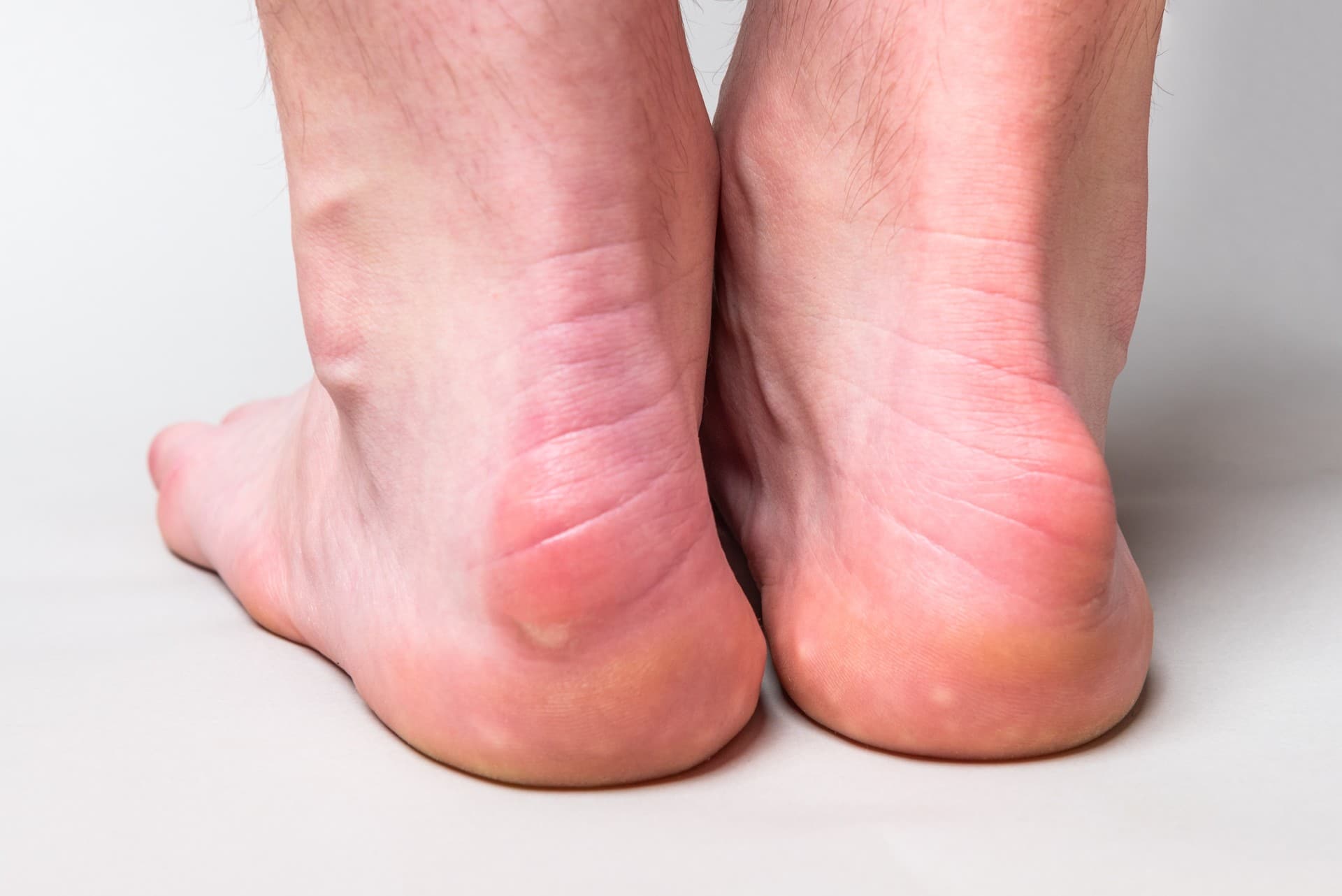Haglund’s Deformity
Each of your feet is made up of 26 individual bones. These range in size from somewhat large to tiny, and they must all work together to keep you upright, balanced, and ensure that you have pain-free, healthy feet.
However, sometimes bones can be displaced, weakened, or deformed, causing extreme pain and loss of mobility in certain cases. One example of bone deformity is a condition called Haglund’s Deformity.
What is Haglund’s Deformity?
Haglund’s Deformity is an abnormality that affects the bone and soft tissues of the heel. It’s most commonly triggered by an enlarged, lumpy bone in the heel, usually located around the same area as the Achilles Tendon. This condition can sometimes lead to Bursitis, or inflammation of the Bursa — the fluid-filled sac between the tendon and bone. It can be extremely irritating and/or painful due to the pressure that the enlarged bone puts on the soft tissues of the heel, especially when wearing shoes.
What are the Symptoms of Haglund’s Deformity?
Haglund’s Deformity has similar symptoms to several other foot conditions, which makes it somewhat difficult to diagnose. However, in certain cases, a diagnosis can be made by an exam followed by an X-Ray. Some of the symptoms of Haglund’s Deformity include:
- Lumpy or bumpy bone protrusion on the back of the heel (one or both feet)
- Redness in the soft tissue area due to irritation
- Extreme pain around the Achilles Tendon
- Swelling of the Bursa at the back of the heel
Treatment Options
There are surgical and non-surgical treatments available for Haglund’s Deformity. Surgery is not usually the first recommendation, as there are less invasive options for treatment that can be just as effective. Surgery consists of either removal of the bony lump or the filing and smoothing of it — each allowing the bursa and soft tissue some much-needed relief from the pressure and irritation.
However, lifestyle changes and non-surgical options are generally recommended first. The less invasive, non-surgical options for treatment can be just as effective for easing the pain of Haglund’s Deformity. Some of those include:
- Custom orthotics to relieve pressure on the heel
- Icing the irritated area for 20-40 minutes daily
- Heel pads to reduce pressure when wearing shoes
- Soft tissue massage
- Wearing backless shoes (flip flops, clogs, etc.)
- Wearing an immobilizing boot
- Taking Non-Steroidal Anti-Inflammatory Drugs or Aspirin to relieve pain and swelling
The main objective is to reduce the pressure that the bony lump puts on the Bursa and soft tissue, which all of these options aim to do. Different things will work for each person — your podiatrist will know what to suggest based on your individual case.
Contact Us About Your Foot Care Needs
As always, talking to a professional is the best way to make sure you get the correct diagnosis and treatment. Whether you’re dealing with Haglund’s Deformity or a different foot-related condition, it’s best to know where you stand as soon as possible. Booking a consultation with us is your first step towards relief, so don’t delay!

